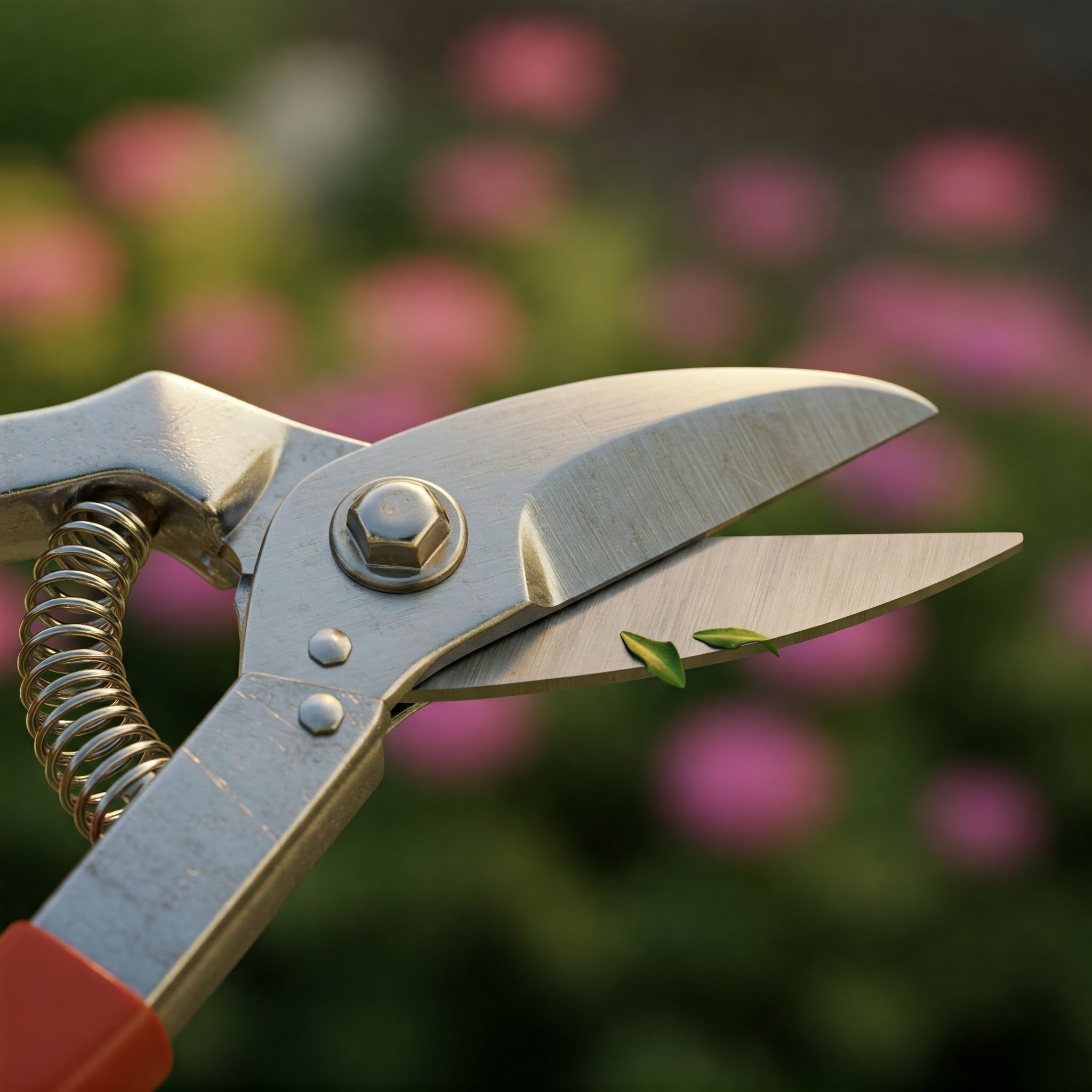How to Grow and Care for Mexican Bush Sage
Learn how to grow and care for Mexican Bush Sage with this easy-to-follow guide. Discover tips for planting, watering, and maintaining this vibrant, low-maintenance plant
Looking for a plant that adds beauty, attracts pollinators, and requires minimal effort to grow? Look no further than the Mexican Bush Sage (Salvia leucantha). With its velvety purple and white flowers, this plant is a showstopper that brings vibrant color to your garden from late summer to fall. The best part? It’s incredibly easy to care for!
Whether you’re a seasoned green thumb or just getting started, this guide on How to Grow and Care for Mexican Bush Sage will walk you through the basics, helping you cultivate healthy, flourishing plants that keep your garden buzzing with life. Let’s get started!
How to Grow and Care for Mexican Bush Sage: The Basics
The first step in growing a successful Mexican Bush Sage plant is picking the right location. While this sage is pretty forgiving, there are a few key factors that will ensure it thrives.
Full Sunlight: Mexican Bush Sage loves the sun and will perform best in a spot that receives at least 6-8 hours of direct sunlight daily. If your garden has a sunny corner, that’s where this plant will be happiest.
Well-Draining Soil: Though it’s not too picky about soil types, this sage does need well-draining soil to prevent root rot. If your soil is clay-heavy, consider adding compost or sand to improve drainage.
Room to Grow: Mexican Bush Sage can grow to about 3-4 feet tall and wide, so make sure it has plenty of space to spread out.
Mexican Bush Sage is a sun-loving plant that thrives in bright, sunny spots, making it ideal for areas that receive at least 6-8 hours of direct sunlight each day. If your garden has a sunny corner, this is where your sage will flourish, producing vibrant purple blooms. While it isn’t fussy about soil types, well-draining soil is essential to prevent root rot. If your soil is heavy with clay, mix in compost or sand to enhance drainage and create a healthier environment for your plant. Additionally, be mindful of space—Mexican Bush Sage can grow to 3-4 feet tall and wide, so it’s important to give it plenty of room to spread out and grow to its full potential.
How to Plant Mexican Bush Sage
Once you’ve found the perfect sunny spot, it’s time to get your sage in the ground. Here’s how to plant it for success.
1. Best Time to Plant
Spring or Early Fall: The best time to plant Mexican Bush Sage is in the spring after the last frost or in early fall before temperatures drop too much. Planting during these cooler seasons gives the roots time to establish before the heat of summer or cold of winter.
2. Planting Steps
Here’s a quick guide to planting Mexican Bush Sage:
Prepare the Soil: Loosen the soil in your chosen spot and mix in some compost to give your plant a nutrient-rich base.
Dig the Hole: Dig a hole that’s twice as wide and just as deep as the root ball of your sage plant.
Plant and Water: Place the sage in the hole, making sure the top of the root ball is level with the ground. Backfill with soil and water deeply to help the plant settle in.
How to Care for Mexican Bush Sage
1. Watering Your Sage
Mexican Bush Sage is pretty drought-tolerant once it’s established, but you’ll need to water it regularly in the beginning.
Watering Young Plants: For the first few weeks after planting, water your sage deeply about once a week. This helps the roots grow strong and deep.
Established Plants: Once your Mexican Bush Sage is established, it’ll only need watering during dry spells. If the weather is particularly hot and dry, give it a good soak to keep it happy.
Proper watering is crucial to helping your Mexican Bush Sage thrive, especially during its early stages. For the first few weeks after planting, water your sage deeply about once a week. This encourages the roots to grow strong and deep, setting the foundation for a healthy, resilient plant. Once established, Mexican Bush Sage becomes quite drought-tolerant, needing water only during extended dry spells. In particularly hot and dry conditions, give the plant a good soak to keep it hydrated and performing at its best. With the right watering schedule, your sage will flourish, producing vibrant blooms while maintaining its low-maintenance, drought-tolerant nature.
2. Feeding Your Mexican Bush Sage
Feeding your sage will encourage lush growth and abundant blooms, though it doesn’t need a lot of fertilizer.
Light Fertilizing in Spring: Use a balanced, slow-release fertilizer in early spring to give your plant a nutrient boost as it begins its growing season. Avoid over-fertilizing, as this can lead to more leaves and fewer flowers.
To give your Mexican Bush Sage a strong start to its growing season, light fertilizing in early spring is recommended. A balanced, slow-release fertilizer works best, providing the plant with a steady supply of nutrients as it begins to grow. Be cautious not to over-fertilize, as too many nutrients can result in more leafy growth at the expense of the vibrant flowers this sage is known for. A moderate application of fertilizer ensures the plant stays healthy without overwhelming it, allowing the blooms to take center stage. With a simple springtime boost, your Mexican Bush Sage will thrive and produce stunning flowers throughout the growing season.
3. Pruning and Deadheading
Pruning your Mexican Bush Sage isn’t complicated, but it’s essential for keeping the plant healthy and looking its best.
Deadheading: While Mexican Bush Sage doesn’t need a lot of deadheading, removing spent flowers can encourage more blooms throughout the growing season.
Pruning for Shape: After the flowering season is over, prune the plant back by about one-third to encourage bushy growth and prevent it from becoming leggy.
Caring for your Mexican Bush Sage involves a bit of maintenance to keep it looking its best and producing abundant blooms. While this plant doesn’t require much deadheading, removing spent flowers can encourage more blooms throughout the growing season, helping the plant maintain its vibrant display. After the flowering season has ended, it’s also important to prune the plant back by about one-third. This encourages bushy growth, prevents the plant from becoming leggy, and helps it stay compact and full. Pruning after flowering not only keeps your Mexican Bush Sage looking tidy but also ensures it continues to thrive and produce beautiful flowers year after year. With minimal upkeep, your sage will stay healthy and lush.
4. Winter Care
If you live in a region where winters can get frosty, a little extra care will help your Mexican Bush Sage survive until spring.
Mulch for Protection: In colder climates, add a layer of mulch around the base of the plant in late fall. This helps insulate the roots and protect them from freezing temperatures.
Cutting Back in Winter: In zones where winters are mild, Mexican Bush Sage is evergreen and won’t die back completely. However, if you live in a colder zone, the plant will likely die back to the ground in winter. Cut back any dead stems in late winter or early spring to make room for new growth.
Protecting your Mexican Bush Sage during winter is essential, especially if you live in a colder climate. In late fall, apply a layer of mulch around the base of the plant to insulate the roots from freezing temperatures. This simple step can help safeguard the plant through the cold season. In areas with mild winters, Mexican Bush Sage remains evergreen and won’t die back fully, but in colder zones, it’s common for the plant to die back to the ground. If this happens, wait until late winter or early spring to cut back any dead stems, making room for fresh growth in the warmer months. With proper winter care, your sage will bounce back strong and healthy each year.
Common Pests and Problems
The good news? Mexican Bush Sage is generally pest-free and disease-resistant. However, like any plant, it can face a few challenges.
1. Root Rot
Causes: Overwatering or poor drainage can lead to root rot, which is fatal for your plant.
Solution: Ensure your soil drains well and avoid overwatering. If your plant’s roots look mushy or smell bad, you might need to remove the affected roots and improve the soil drainage.
2. Aphids and Spider Mites
Symptoms: You may notice yellowing leaves or small pests on your sage. Aphids and spider mites are occasional visitors.
Solution: Use a strong spray of water to knock off the pests or treat with insecticidal soap if necessary.
How to Grow and Care for Mexican Bush Sage: Growing in Containers
If you don’t have a lot of space or prefer to keep your plants portable, Mexican Bush Sage grows wonderfully in containers.
1. Choosing the Right Container
Size: Pick a pot that’s at least 12-14 inches in diameter to give your sage plenty of room to grow. Make sure the container has good drainage holes.
Soil Mix: Use a well-draining potting mix designed for container gardening. You can add some perlite or sand for extra drainage.
2. Watering Container Plants
Regular Watering: Container plants dry out faster than those in the ground, so you’ll need to water your potted Mexican Bush Sage more frequently. Check the soil moisture regularly, and water when the top inch of soil feels dry.
Conclusion
Now that you know How to Grow and Care for Mexican Bush Sage, you’re ready to bring this vibrant, low-maintenance plant into your garden! Whether you’re looking to add a pop of late-season color, attract pollinators, or simply enjoy a fuss-free plant that thrives in sun and well-drained soil, Mexican Bush Sage is an excellent choice. With the right care and a little attention, you’ll be rewarded with its stunning purple blooms year after year. Happy gardening!
Frequently Asked Questions
1. How tall does Mexican Bush Sage grow?
Mexican Bush Sage typically grows between 3 and 4 feet tall, with a similar spread. It’s perfect for filling out garden borders or adding height to your landscape.
2. Is Mexican Bush Sage deer-resistant?
Yes! Mexican Bush Sage is generally deer-resistant, making it a great option for gardens that see frequent visits from hungry wildlife.
3. Does Mexican Bush Sage attract pollinators?
Absolutely! The vibrant purple flowers of Mexican Bush Sage are a magnet for pollinators like bees, butterflies, and hummingbirds.
4. Can I grow Mexican Bush Sage indoors?
While Mexican Bush Sage prefers to be grown outdoors where it can soak up the sun, it can be grown in a sunny indoor spot as long as it gets enough light and air circulation.
5. When does Mexican Bush Sage bloom?
Mexican Bush Sage typically blooms in late summer and continues flowering into fall, adding gorgeous color to your garden when many other plants are winding down.
































